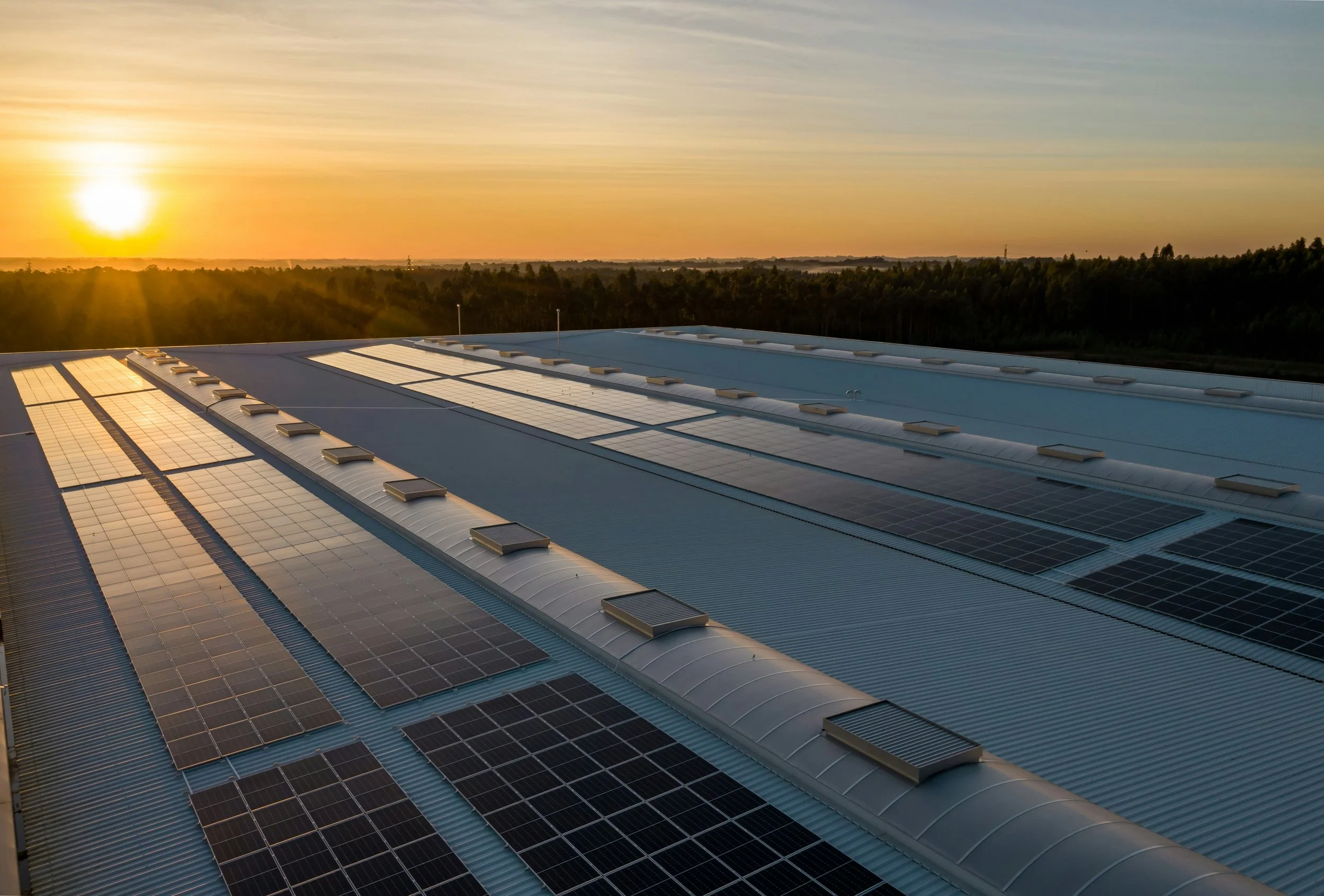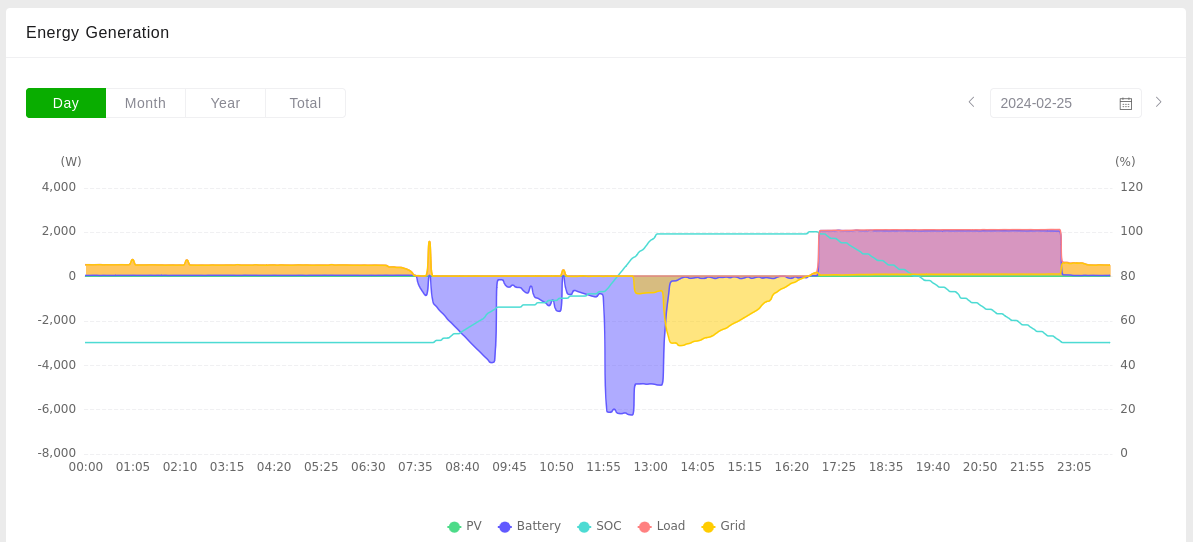Solar Adventures Continue
Photo by Nuno Marques on Unsplash.
As usual, things change. When I originally scoped out my solar setup this was based upon a situation that no longer exists - it assumed a certain level of grid usage based upon older servers and a lot of gas-powered devices such as heating, hot water, and automobiles. It also assumed that excess power generated by the solar panels could not only be sent to the grid, but there was no limit on the amount of credit accumulated for excess uploaded allowing for a massive credit to be built up in the summertime to offset cloudy days and shorter solar cycles in the winter.
But there have been changes. I now pay an electric bill as there is a cap on credit that is applied for uploaded power - one cannot get more credit in a month than one pulls down from the grid for that month. Also I now have house batteries for storing excess solar energy, completely revamped the server setup, an EV, and a lot of home automation.
The goal is and has always been net zero - do not use more energy than you can offset. This has been a challenge because I have encountered some hard limits. Roughly speaking, I either need more capacity to store energy (increase battery capacity) or increased energy production (increase solar capacity). It is also possible I need both.
So let me map things out for you so you can see where I am coming from.
The Current State
Since the grid credit was ending, I moved to get the batteries for the house tied into the solar setup. Of course with the batteries, I’ve drastically reduced grid usage. On a sunny day they can charge to 100% by early afternoon, excess in the rest of the afternoon is uploaded to the grid, and at 5pm I can run off of batteries until they reached 50%. This has meant that peak usage time I was not pulling from the grid, and by the time the batteries reached 50% dinner was over, television off, and lights out for bed. They stayed at 50% to cover any potential outage until morning, and at sunrise the entire process started all over again.
The servers were updated to help with efficiency and decrease overall power demands, the newer servers did not generate nearly as much heat so the old server room AC didn’t have to be turned on. And with the advent of Home Assistant and routines for controlling lighting, further reduction in power usage occurred. Basically all of the minor changes I was making chipped away at grid usage.
The EV changed all that. Regardless of when I charged, there was an increase in grid usage. If I charged the EV during the morning, the house batteries would charge in the afternoon instead of the morning with no excess being uploaded to the grid. Charging at higher amperage levels resulted in decreased levels of charge in the batteries, which meant the evening hours were not fully covered by the batteries. Charging overnight meant simply pulling directly from the grid. So I eventually came up with a schedule that worked (barely).
This can be illustrated via Figure 1 below, which is a sample sunny day with EV charging. At 7am it’s dawn with a slight drop in power usage as outside lights go off, by about 7:30am the solar energy is covering the house load and the house batteries begin charging, 8am breakfast spike via electric kettle and toaster, and at 9:30am EV charging starts with the Wallbox set to 9 amps. At 10:15am Home Assistant adjusts the Wallbox to 10 amps, and at 11am there is another jump to 11 amps (and the microwave heats up lunch). At noon the EV charging ends, by 12:30pm excess load begins being sent to the grid, and at 1pm the house batteries are charged. Excess continues to be sent to the grid until 5pm and then the batteries kick in. Battery power handles the load until around 11pm when the batteries reach 50%, which should more than handle an overnight outage. I only plug in the car to charge on sunny days, and I typically charge until the car is at 80%, and I drive it until the charge has dropped to 45-50%. To get it from 45% to 80% typically takes about three to four sunny days, otherwise I don’t plug in.
Figure 1. A typical sunshine day. PV reads zero only because it is added to the house load as a negative, reducing it. That explains the negative values where the solar is charging the batteries.
This is typical for fall and spring, but the further into spring and in the summer the batteries do not automatically kick in at 5pm - they kick in when the solar power being generated doesn’t cover the house load and the demand requires power from the grid starting at 5pm. If solar energy covers the load until 6pm or 7pm, that simply means more time handling the house load with stored energy, sometimes extending until well after midnight.
I realize that I have a huge advantage compared to other people. My driving around town is usually to and from a local park so that during dog walks my dog and I are not hitting the same park every day, or I am visiting family or friends that live nearby. I work from home so I don’t have to commute, and living alone I am only running a few errands very infrequently. So this light travel schedule means I can make that 80% to 45-50% non-charging time last several days.
It took months to reach this point by experimenting with different schedules and whatnot, but it is clear I am right at capacity. So any other changes that occur will result in yet another scenario of increased grid usage. And it seems I have a new situation coming up.
New Changes
My gas powered hot water heater is quite old. It is still functioning just fine, but it exceeded its life expectancy several years ago and needs to be replaced. I’d rather replace it with a water heater of my own choice, and not whatever is in stock because I am completely out of hot water due to water heater failure. Currently I am looking at an on-demand tankless hot water heater, and that will require a 240v outlet. I am merely guessing, but figure that voltage demands will be similar to a 240v electric clothes dryer. Yes I do have plans to replace the dryer with a heat pump version, however I’m focused on the water heater right now.
There is an old and large alder tree in the backyard that grows right on the property line between mine and my neighbor’s backyards. It has recently started rotting near the base and has some type of black fungal growths - it is dying. Storm season approaches and I am not thrilled with the idea of this tree collapsing onto my workshop in the backyard, the fence, as well as the house. My neighbor has the same worries, so after years of removing large dead limbs we are going to completely remove the tree. The reason I bring this up is because the silver lining to this is that this frees up some roof real estate on the workshop for more solar panels.
I do have a bit more room on my roof, however due to other quite healthy trees these spots are rather impractical as they would only be productive for a few short hours. The workshop roof without the tree next to it could harvest solar energy for most of the daylight hours.
Looking Forward
So this is roughly the plan:
Map out potential usage of the workshop roof for additional solar panels.
Map out potential increases to battery storage capacity to further curtail evening power usage.
Determine which option will benefit the overall situation the most, or if both options are needed.
Begin the arduous process of integrating the best solution into the overall system.
I’ll keep you posted with my progress as things move forward. Right now I am leaning towards a few more panels, but as I’ve encountered previously, things don’t always go smooth or work out exactly I think they are going to, so we’ll see where we end up.




